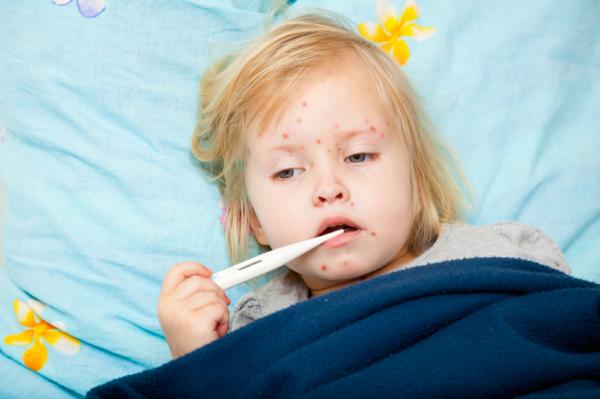Have a series of spots appeared on your face and you don't know what could be the cause? If these small dots are reddish but have a whitish to bluish center and are concentrated in some areas of the face, they are probably Koplik's spots. These signs on the skin are identified by these tones and by appearing especially in areas such as the face and the inside of the mouth, especially in the mucosa of the lining of the cheeks. If other symptoms such as fever, cough and sore throat have also arisen, the main cause of Koplik's spots is that the person who has them is suffering from a viral disease known as measles. This disease is more common in children, especially children who have not been vaccinated, but cases in adults are also common.

What is the cause of Koplik spots?
As we have anticipated, the reason why these types of signs appear on the skin is measles . In other words, Koplik's spots are considered one of the common symptoms of this respiratory infection. Therefore, we can say that the causes of this disease are the same as those of this type of signs on the skin. In this regard, measles is a viral infection that is characterized by being highly contagious. In other words, a person can get this virus if they come into direct contact with the infected person or if they have touched any surface where there are drops that the patient has expelled when speaking, sneezing or coughing.
In addition to this, there are also factors that increase the risk of measles and its symptoms, such as Koplik's spots. Some of the risk factors are:
- Do not get vaccinated against measles: if you are not vaccinated and you come into contact with someone who is infected, you will surely get this virus.
- Frequent travel to other countries: You are more likely to get measles if you frequently go to developing countries.
- Vitamin A deficiency: the lack of this vitamin and other nutrients can cause complications if you have this disease.
Measles stages and symptoms
In addition to Koplik's spots, there are other symptoms that will help you detect this viral infection. Next, we will explain the symptoms of measles according to its stages :
- Incubation: between the first 10 and 14 days, measles is incubating in our body. In this period, there are usually no symptoms.
- Early symptoms of the disease: Once incubated, this infection usually presents with a low-grade fever, cold, constant cough, sore throat, and conjunctivitis. If the measles is mild, the infection will last 2-3 days.
- Appearance of skin rashes: when the disease lasts more than three days, it is considered an acute infection. In this phase, rashes usually appear on the face such as Koplik's spots, especially inside the mouth and on the cheeks. Over the days, the rashes spread to other parts of the body until they gradually disappear.
- Spread: A person can spread measles for up to 8 days after symptoms are gone.
In this other oneHOWTO article we show what the symptoms of measles are like .
Treatment for Koplik's spots and measles
There is currently no specific treatment for measles. There are only some preventive measures for those who have not been exposed to the infection, such as vaccinations for non-immunized people and serum immunoglobulin for cases such as pregnant women, babies or people with a weak immune system.
However, we can find some medications that can reduce some of its symptoms:
- Antipyretics: Some over-the-counter fever-reducing drugs include acetaminophen, ibuprofen, or naxoprene. They can help relieve symptoms such as fever and help reduce inflammation. However, it is important that before taking or administering it we consult our GP.
- Antibiotics: this type of medication can only be purchased with a medical prescription. These drugs are usually used when complications due to measles such as ear infection, pneumonia or other bacterial infections appear.
- Vitamin A supplements: This type of supplement is usually given to people or children with deficient levels of this nutrient to prevent possible complications or a much more serious case of measles.
In addition to the above medications, we can also carry out some of the following recommendations:
- Rest: it is important that during those days we try to rest as much as possible.
- Drink plenty of water: fever is a condition that can dehydrate us, so it is advisable to drink more fluids during measles.
- Use humidifiers: regulating humidity will be essential to avoid coughs and sore throats.
- Do not strain your eyes: avoid bright lights, reading or watching television.




